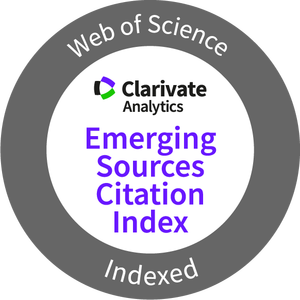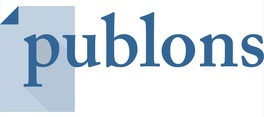Effectiveness of simple motor skills training (SMST) and complex motor skills training (CMST) in young boxing students (aged 13–14) from a rural school in Kazakhstan
Abstract
Boxing sport requires an effective selection of strategies, skills, and techniques. Mastering skills ranging from simple motor skills (SMS) to complex motor skills (CMS) requires dedicated training and engagement. This study was designed to assess the association between complex motor skills training (CMST), simple motor skill training (SMST), and technical performance effectiveness (STPE) among boxing students of Terekti Village Sports School in Kazakhstan. The study included 160 male students aged 13–14 from 8th and 9th grade. They were divided into two groups, each consisting of four teams, with 20 boxing students per team. The association between SMST and CMST was statistically significant (β = 0.313). CMST has a strong positive and statistically significant (p = 0.000) association with SMST (r = .620**). STPE has a strong positive association with SMST (r = 0.781**) and with CMST (r = 0.674**). Therefore, from the Pearson correlation analysis, we found that SMST, CMST, and STPE are all positively associated. The study findings showed that simple motor skills training (SMST) is positively associated with complex motor skills training (CMST). Both CMS and CMS are positively associated with students’ technical performance effectiveness (STPE).
Downloads
-
Abstract330
-
PDF189
References
Balyi, I., Way, R., & Higgs, C. (2013). Long-term athlete development. Human Kinetics.
Bozdarov, J., Jones, B. D. M., Daskalakis, Z. J., & Husain, M. I. (2022). Boxing as an Intervention in Mental Health: A Scoping Review. American Journal of Lifestyle Medicine, 17(4), 589–600. https://doi.org/10.1177/15598276221124095
Bunker, L. K. (1991). The role of play and motor skill development in building children's self-confidence and self-esteem. The Elementary School Journal, 91(5), 467-471. https://doi.org/10.1086/461669
Çetin, O., Beyleroğlu, M., Bağış, Y. E., & Suna, G. (2018). The effect of the exercises brain on boxers’ eye-hand coordination, dynamic balance and visual attention performance. Physical Education of Students, 22(3), 112-119. https://doi.org/10.15561/20755279.2018.0301
Chaabène, H., Tabben, M., Mkaouer, B., Franchini, E., Negra, Y., Hammami, M. & Hachana, Y. (2015). Amateur boxing: physical and physiological attributes. Sports Medicine, 45, 337-352. https://doi.org/10.1007/s40279-014-0274-7
Coker, C. (2017). Motor learning and control for practitioners. Routledge, UK.
Denny, V. G. (2010). Where to focus attention when performing the jump float serve in volleyball. Journal of Coaching Education, 3(1), 56-68. https://doi.org/10.1123/jce.3.1.56
Dyson, B. (2014). Quality physical education: A commentary on effective physical education teaching. Research Quarterly for Exercise and Sport, 85(2), 144-152. https://doi.org/10.1080/02701367.2014.904155
El Ashker, S. (2012). Technical performance effectiveness subsequent to complex motor skills training in young boxers. European Journal of Sport Science, 12(6), 475-484. https://doi.org/10.1080/17461391.2011.606976
El-Ashker, S. (2018). The impact of a boxing training program on physical fitness and technical performance effectiveness. Journal of Physical Education and Sport, 18(2), 926-932.
Erwin, H. E., & Castelli, D. M. (2008). National physical education standards: a summary of student performance and its correlates. Research Quarterly for Exercise and Sport, 79(4), 495-505. https://doi.org/10.1080/02701367.2008.10599516
Fogel, V. A., Miltenberger, R. G., Graves, R., & Koehler, S. (2010). The effects of exergaming on physical activity among inactive children in a physical education classroom. Journal of Applied Behavior Analysis, 43(4), 591-600. https://doi.org/10.1901/jaba.2010.43-591
Gallahue, D. L., & Donnelly, F. C. (2007). Developmental physical education for all children. Human Kinetics.
Goodway, J. D., & Branta, C. F. (2003). Influence of a motor skill intervention on fundamental motor skill development of disadvantaged preschool children. Research Quarterly for Exercise and Sport, 74(1), 36-46. https://doi.org/10.1080/02701367.2003.10609062
Granacher, U., & Borde, R. (2017). Effects of sport-specific training during the early stages of long-term athlete development on physical fitness, body composition, cognitive, and academic performances. Frontiers in Physiology, 8, 1-11. https://doi.org/10.3389/fphys.2017.00810
Jordan, B., & Herrera, J. (2008). Medical Aspects of Boxing Musculoskeletal Medicine (2nd ed.): USA, IL: Humana Press.
Kraft, K. P., Steel, K. A., Macmillan, F., Olson, R., & Merom, D. (2015). Why few older adults participate in complex motor skills: a qualitative study of older adults’ perceptions of difficulty and challenge. BMC Public Health, 15(1), 1-11. https://doi.org/10.1186/s12889-015-2501-z
Laukkanen, A., Pesola, A., Havu, M., Sääkslahti, A., & Finni, T. (2014). Relationship between habitual physical activity and gross motor skills is multifaceted in 5‐to 8‐year‐old children. Scandinavian Journal of Medicine & Science in Sports, 24(2), 102-110. https://doi.org/10.1111/sms.12116
Lee, S. M., Burgeson, C. R., Fulton, J. E., & Spain, C. G. (2007). Physical education and physical activity: results from the School Health Policies and Programs Study 2006. Journal of School Health, 77(8), 435-463. https://doi.org/10.1111/j.1746-1561.2007.00229.x
Lloyd, R. S., Moeskops, S., & Granacher, U. (2019). Motor skill training for young athletes. In Strength and Conditioning for Young Athletes. Routledge.
Logan, S. W., Robinson, L. E., Wilson, A. E., & Lucas, W. A. (2012). Getting the fundamentals of movement: a meta‐ analysis of the effectiveness of motor skill interventions in children. Child: Care, Health and Development, 38(3), 305-315. https://doi.org/10.1111/j.1365-2214.2011.01307.x
Logan, S. W., Ross, S. M., Chee, K., Stodden, D. F., & Robinson, L. E. (2018). Fundamental motor skills: A systematic review of terminology. Journal of Sports Sciences, 36(7), 781-796. https://doi.org/10.1080/02640414.2017.1340660
Loudcher, J. F. (2007). A history of savate, chausson and ‘French boxing’ (1828– 1978): A short story for a long past. Sport in History, 27(3), 459-486. https://doi.org/10.1080/17460260701591700
Magill, R., & Anderson, D. I. (2010). Motor learning and control. New York: McGraw-Hill Publishing.
Mr, H. A. H. (2021). The effect of cross-training exercises to develop some physical motor skill and physiology abilities of boxing young players. Sciences Journal of Physical Education, 14(2), 130-156.
Petrie, K., & Lisahunter. (2011). Primary teachers, policy, and physical education. European Physical Education Review, 17(3), 325-329. https://doi.org/10.1177/1356336X11416729
Raiola, G. (2017). Motor Learning and Teaching Method. Journal of Physical Education and Sport, 17, 2239-2243.
Rakha, A. H. (2023). Application of 3D hologram technology combined with reciprocal style to learn some fundamental boxing skills. Plos One, 18(5), 1-15. https://doi.org/10.1371/journal.pone.0286054
Sheridan, S. M., Edwards, C. P., Marvin, C. A., & Knoche, L. L. (2009). Professional development in early childhood programs: Process issues and research needs. Early Education and Development, 20(3), 377-401. https://doi.org/10.1080/10409280802582795
Shevlin, M., Miles, J. N. V., Davies, M. N. O., & Walker, S. (2000). Coefficient alpha: a useful indicator of reliability?. Personality and Individual Differences, 28(2), 229- 237. https://doi.org/10.1016/S0191-8869(99)00093-8
Sienkiewicz-Dianzenza, E., & Maszczyk, Ł. (2019). The impact of fatigue on agility and responsiveness in boxing. Biomedical Human Kinetics, 11(1), 131-135. https://intapi.sciendo.com/pdf/10.2478/bhk-2019-0018
Stodden, D. F., Goodway, J. D., Langendorfer, S. J., Roberton, M. A., Rudisill, M. E., Garcia, C., & Garcia, L. E. (2008). A developmental perspective on the role of motor skill competence in physical activity: An emergent relationship. Quest, 60(2), 290-306. https://doi.org/10.1080/00336297.2008.10483582
Sutapa, P., Pratama, K. W., Rosly, M. M., Ali, S. K. S., & Karakauki, M. (2021). Improving motor skills in early childhood through goal-oriented play activity. Children, 8(11), 1-11. https://doi.org/10.3390/children8110994
Taras, H. (2005). Physical activity and student performance at school. Journal of School Health, 75(6), 214-218. https://doi.org/10.1111/j.1746-1561.2005.tb06675.x
The works and papers that are published in this Journal are subject to the following terms:
1. The Publication Service of the University of Murcia (the publisher) has the Publication Rights (Copyright) to the published papers and works, and favors and permits the reusing of the same under the license indicated in point 2.
© Servicio de Publicaciones, Universidad de Murcia, 2013
2. The papers and works are to be published in the digital edition of the Journal under the license Creative Commons Reconocimiento-No Comercial-Sin Obra Derivada 3.0 España (legal text). The copying, using, spreading, transmitting and publicly displaying of the papers, works or publication are permitted as long as: i) the authors and original sources (Journal, publisher and URL of the publication) are quoted; ii) it is not used for commercial benefit; iii) the existence and specifications of this users license are mentioned.
3. Conditions of Self-Archiving. It is permitted and encouraged that the authors spread electronically the pre-print (before printing) and/or post-print (the revised, evaluated and accepted) versions of their papers or works before their publication since this favors their circulation and early diffusion and therefore can help increase their citation and quotation, and also there reach through the academic community.
The works and papers that are published in this Journal are subject to the following terms:
1. The Publication Service of the University of Murcia (the publisher) has the Publication Rights (Copyright) to the published papers and works, and favors and permits the reusing of the same under the license indicated in point 2.
© Servicio de Publicaciones, Universidad de Murcia, 2013
2. The papers and works are to be published in the digital edition of the Journal under the license Creative Commons Reconocimiento-No Comercial-Sin Obra Derivada 3.0 España (legal text). The copying, using, spreading, transmitting and publicly displaying of the papers, works or publication are permitted as long as: i) the authors and original sources (Journal, publisher and URL of the publication) are quoted; ii) it is not used for commercial benefit; iii) the existence and specifications of this users license are mentioned.
3. Conditions of Self-Archiving. It is permitted and encouraged that the authors spread electronically the pre-print (before printing) and/or post-print (the revised, evaluated and accepted) versions of their papers or works before their publication since this favors their circulation and early diffusion and therefore can help increase their citation and quotation, and also there reach through the academic community.

















